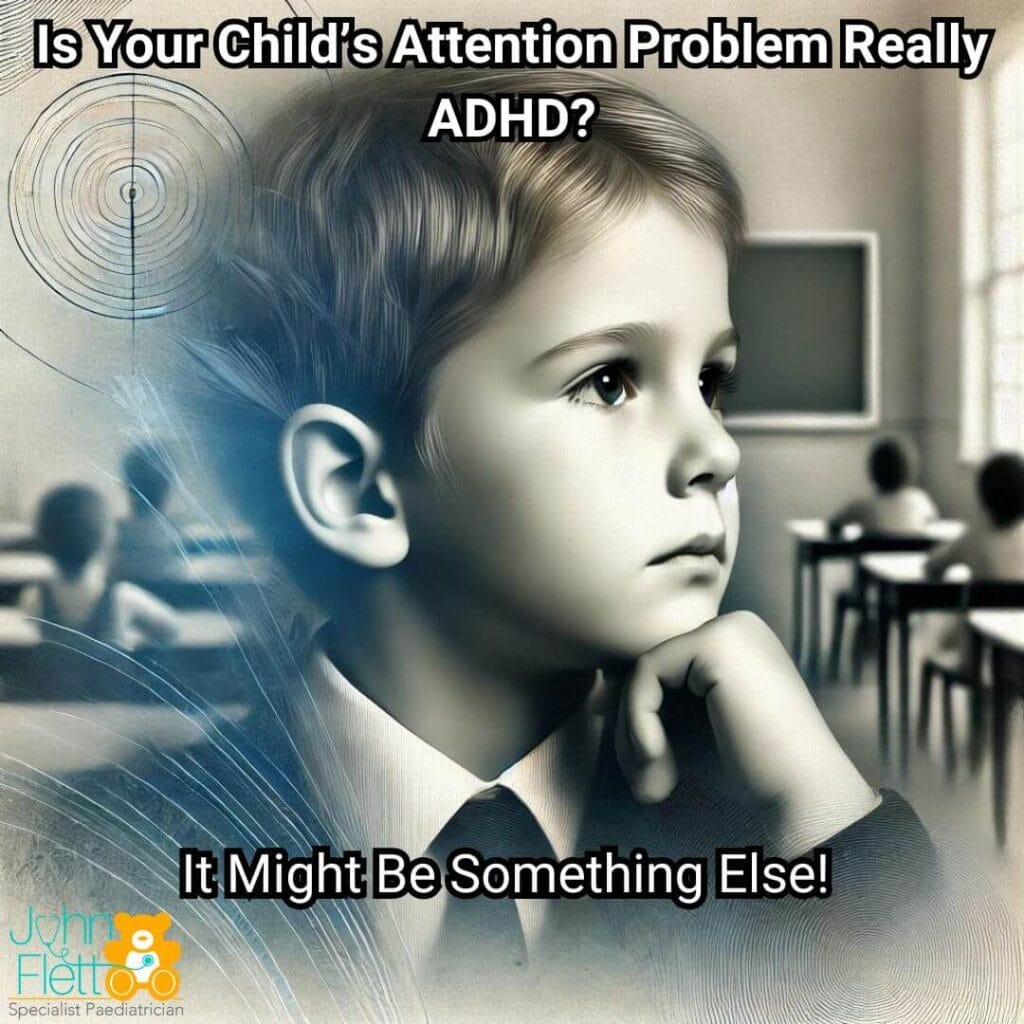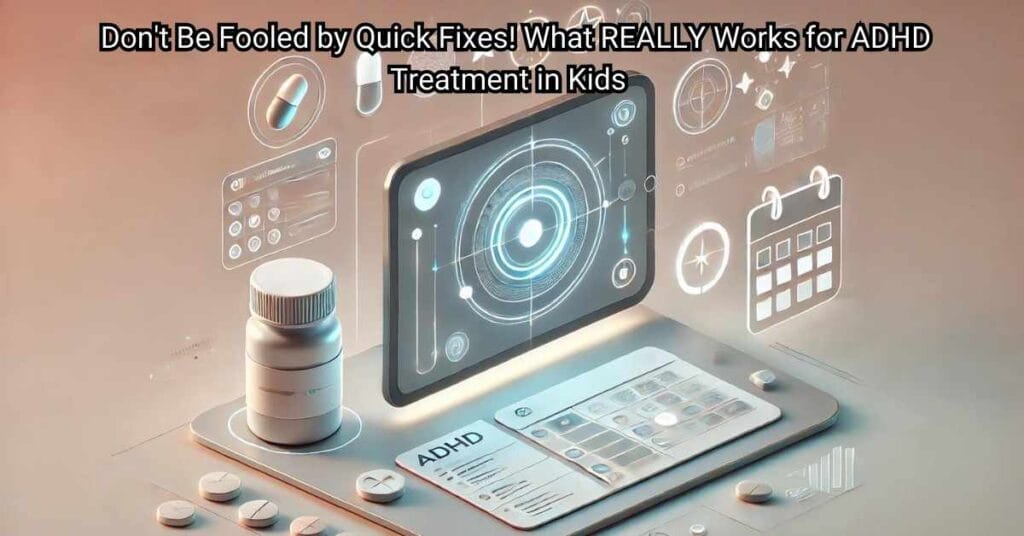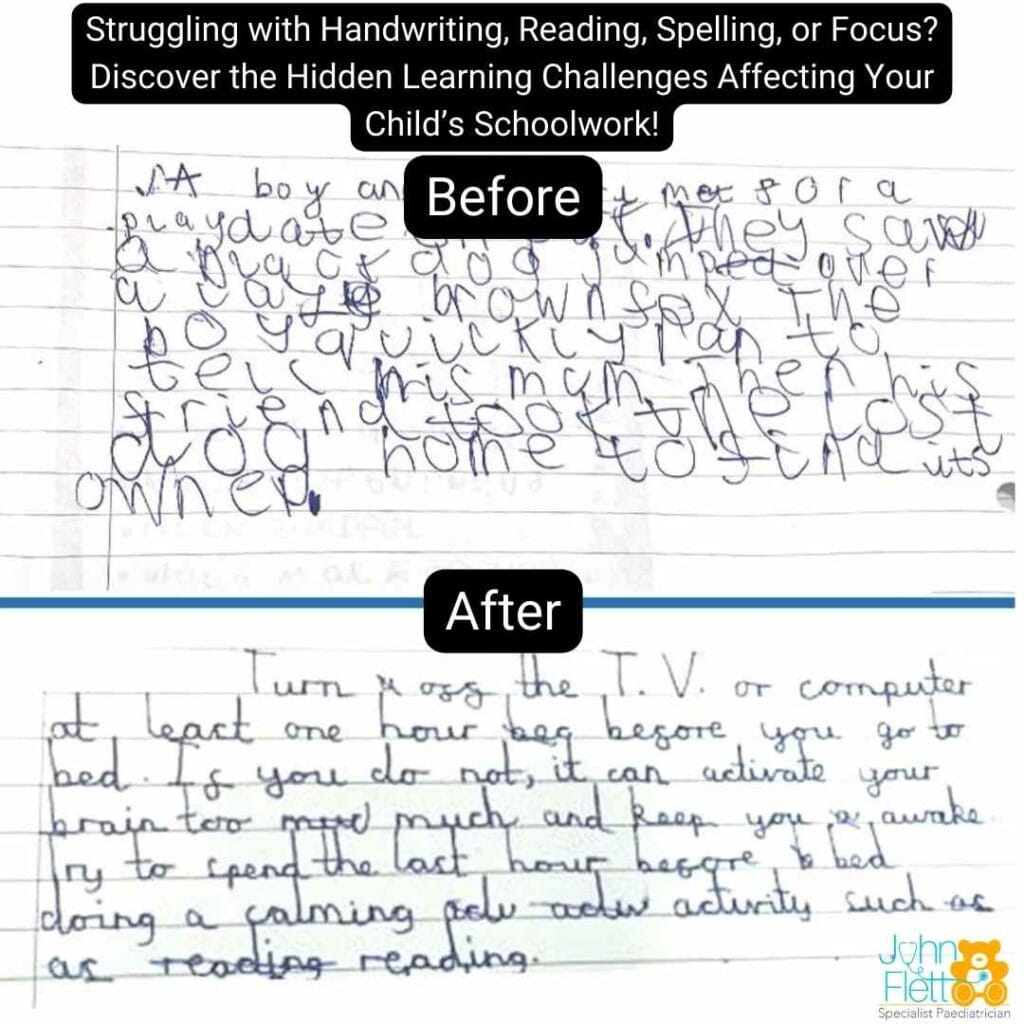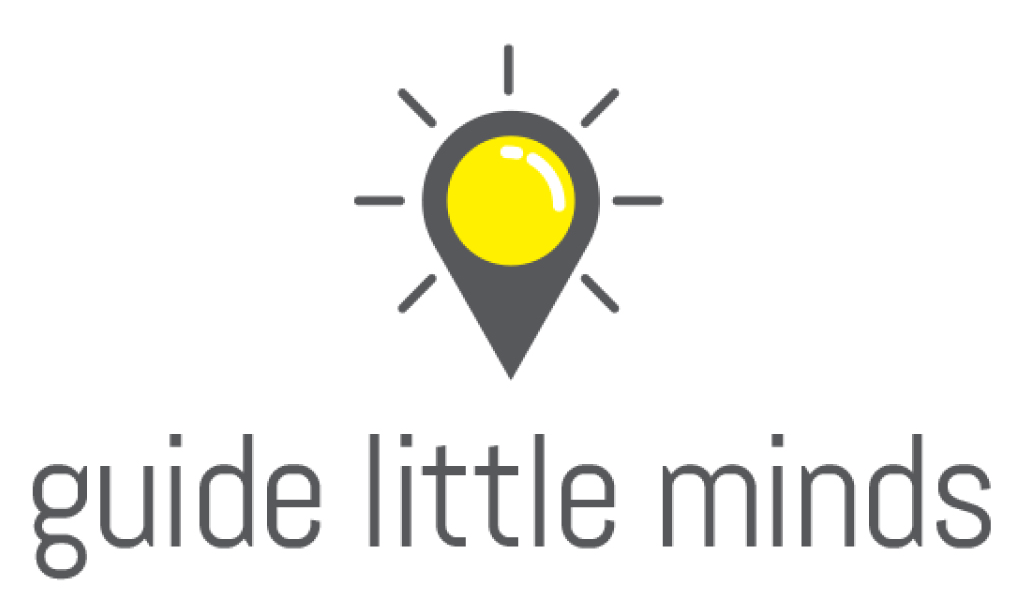🧠 Is Your Child’s Attention Problem Really ADHD? It Might Be Something Else! 🧠

Parents and teachers, it’s time to take a closer look. While ADHD is a well-known and commonly diagnosed attention disorder, there’s another condition that could be affecting your child: Cognitive Disengagement Syndrome (CDS). This lesser-known disorder is often mistaken for ADHD, but it’s crucial to understand the differences to provide the right support.
What is Cognitive Disengagement Syndrome (CDS)?
CDS is a concentration disorder that, unlike ADHD, does not involve hyperactivity or impulsivity. Instead, children with CDS often appear disengaged, mentally checked out, or daydreaming. They might seem lost in thought, unable to stay focused on tasks, and may struggle with following through on assignments, but without the restless energy typical of ADHD.
Key Differences Between CDS and ADHD:
- Lack of Hyperactivity: Children with CDS are often calm and may even appear lethargic, contrasting with the hyperactivity seen in ADHD.
- Mental Fog: CDS is characterized by a sense of mental fog or a “zoned-out” state, making it hard for children to engage with their surroundings.
- Subtle Disengagement: Unlike the overt distractions in ADHD, CDS involves a more subtle, internal disengagement that can be easily overlooked.
- Task Avoidance vs. Task Disruption: While children with ADHD might disrupt tasks due to impulsivity, those with CDS might avoid or mentally withdraw from tasks altogether.
Could Your Child Be Misdiagnosed?
If your child has been diagnosed with ADHD but you’ve noticed that hyperactivity and impulsivity are not part of the picture, it’s worth considering whether CDS could be the real issue. Misdiagnosis can lead to ineffective treatments, so understanding the exact nature of your child’s challenges is essential.
Why It Matters:
Correctly identifying CDS can lead to more targeted interventions, helping your child engage more effectively in school and daily activities. It can also prevent the frustration that comes from treatments that don’t seem to work because they’re not addressing the right problem.
What Can You Do?
- Get a Comprehensive Evaluation: If you suspect CDS, consult with a specialist who can differentiate between ADHD and CDS.
- Tailored Support: Explore interventions that focus on enhancing mental engagement, such as cognitive-behavioral therapy, structured routines, and environmental modifications.
Don’t let your child struggle with the wrong diagnosis. Understand the difference, and take the right steps toward helping them thrive.
🔍 Learn more and take action today. #CognitiveDisengagementSyndrome #ADHD #ChildDevelopment #Parenting #Education #MentalHealthAwareness
Cognitive Disengagement Syndrome (CDS) and ADHD (Attention Deficit Hyperactivity Disorder) are both concentration disorders, but they differ significantly in their symptoms and, consequently, in their treatment and management strategies. Here’s a detailed comparison of how CDS is treated and managed compared to ADHD:
1. Understanding the Disorders:
- Cognitive Disengagement Syndrome (CDS):
- CDS is characterized by symptoms such as mental fog, daydreaming, a “zoned-out” appearance, and difficulties engaging with tasks or surroundings. It lacks the hyperactivity and impulsivity typically associated with ADHD.
- ADHD:
- ADHD is marked by hyperactivity, impulsivity, and inattention. Children with ADHD often struggle to stay seated, follow instructions, and control impulsive behaviors.
2. Treatment Approaches:
- Medication:
- CDS:
- Medication is not always the first line of treatment for CDS because the symptoms are more related to mental disengagement rather than hyperactivity or impulsivity. When medication is considered, it may involve low-dose stimulants or non-stimulant options, though these are less commonly used than in ADHD.
- Some cases might benefit from cognitive enhancers or medications targeting specific cognitive functions, but the effectiveness can vary, and the focus is often more on non-pharmacological approaches.
- ADHD:
- Medication is a cornerstone of ADHD treatment, particularly stimulant medications like methylphenidate (Ritalin) or amphetamines (Vyvanse). These help increase dopamine and norepinephrine levels in the brain, improving focus, attention, and impulse control.
- Non-stimulant medications like atomoxetine (Strattera) or certain antidepressants may also be used, particularly if stimulants are ineffective or cause undesirable side effects.
- CDS:
- Behavioral Therapy:
- CDS:
- Cognitive-behavioral therapy (CBT) is crucial in treating CDS. CBT can help children develop strategies to enhance engagement with tasks, improve attention, and manage the mental fog associated with CDS. Techniques might include mindfulness, organizational skills training, and exercises to strengthen cognitive focus.
- Environmental modifications, such as reducing distractions and creating structured routines, are often employed to help children with CDS remain engaged.
- ADHD:
- Behavioral therapy is also used for ADHD, often focusing on managing hyperactivity and impulsivity. Techniques might include behavior modification strategies, reward systems, and skills training to improve social interactions and reduce disruptive behaviors.
- Parent training programs are often recommended to help parents manage their child’s ADHD symptoms effectively at home.
- CDS:
- Educational Interventions:
- CDS:
- In the classroom, children with CDS may benefit from individualized education plans (IEPs) that include strategies like extended time on tests, breaking tasks into smaller steps, and using visual aids to maintain engagement.
- Teachers might use more frequent check-ins to ensure that the child remains on task, along with seating arrangements that minimize distractions.
- ADHD:
- Educational interventions for ADHD often include accommodations such as seating the child at the front of the class, providing frequent breaks, and allowing movement.
- Teachers may use clear, concise instructions and provide structured routines to help the child manage their tasks and reduce impulsivity.
- CDS:
- Social and Environmental Support:
- CDS:
- Social support for CDS focuses on building awareness and understanding among peers and educators. Children with CDS may need help developing social skills and engaging more effectively in group activities.
- Family therapy or support groups can help families understand the unique challenges of CDS and develop strategies to support their child’s cognitive engagement at home and in social settings.
- ADHD:
- Social support for ADHD includes peer interaction training, social skills groups, and sometimes family therapy to address the impact of ADHD on family dynamics.
- ADHD management often requires a broader community approach, including coordination between parents, teachers, and healthcare providers.
- CDS:
3. Monitoring and Follow-Up:
- CDS:
- Regular monitoring focuses on evaluating the effectiveness of behavioral interventions and educational strategies. Adjustments are made as needed based on the child’s progress in maintaining cognitive engagement and improving focus.
- Progress in CDS is often slower and more gradual, requiring consistent monitoring and adjustments to strategies over time.
- Regular monitoring focuses on evaluating the effectiveness of behavioral interventions and educational strategies. Adjustments are made as needed based on the child’s progress in maintaining cognitive engagement and improving focus.
- ADHD:
- For ADHD, regular follow-ups often involve adjusting medication dosages, monitoring side effects, and evaluating behavioral improvements. Continuous assessment of the child’s academic performance and social interactions is key to managing ADHD effectively.
- Monitoring for comorbid conditions, such as anxiety or learning disabilities, is also common in ADHD treatment plans.
- For ADHD, regular follow-ups often involve adjusting medication dosages, monitoring side effects, and evaluating behavioral improvements. Continuous assessment of the child’s academic performance and social interactions is key to managing ADHD effectively.
4. Outcome Expectations:
- CDS:
- Treatment for CDS aims to improve cognitive engagement, reduce mental fog, and enhance the child’s ability to focus on tasks. Success is measured by the child’s ability to stay engaged in schoolwork and social activities with fewer instances of disengagement.
- Long-term management may involve ongoing behavioral therapy and environmental modifications as the child grows and their cognitive demands change.
- Treatment for CDS aims to improve cognitive engagement, reduce mental fog, and enhance the child’s ability to focus on tasks. Success is measured by the child’s ability to stay engaged in schoolwork and social activities with fewer instances of disengagement.
- ADHD:
- For ADHD, the goal is to reduce hyperactivity and impulsivity, improve attention, and enhance the child’s ability to function effectively in various settings. Success is typically marked by improved academic performance, better behavior at home and school, and more positive social interactions.
In summary, while both CDS and ADHD involve challenges with concentration, their treatment and management differ significantly. CDS requires a more nuanced approach focused on enhancing cognitive engagement, often without the reliance on medication, while ADHD treatment frequently involves medication combined with behavioral strategies to manage hyperactivity and impulsivity. Understanding these differences is crucial for providing the right support to children facing these challenges
Cognitive Disengagement Syndrome (CDS) is a relatively new and emerging concept, and as such, it does not have formally established diagnostic criteria in the same way that Attention Deficit Hyperactivity Disorder (ADHD) or other well-known conditions do. However, based on the current understanding of CDS, which is often referred to in the literature as “Sluggish Cognitive Tempo” (SCT), the following characteristics are generally associated with the condition:
1. Primary Symptoms:
- Daydreaming: The child may often seem lost in thought or “zoned out,” appearing disconnected from their surroundings.
- Mental Fog or Confusion: The child may experience frequent mental fog, leading to slow information processing and difficulties in completing tasks.
- Lethargy: There is often a noticeable lack of energy or motivation, with the child appearing sluggish or fatigued.
- Apathetic or Unmotivated Behavior: The child may display a lack of interest in activities that typically engage other children, including play or academic tasks.
- Hypoactivity: Unlike the hyperactivity seen in ADHD, children with CDS may be unusually calm or inactive.
2. Attention-Related Symptoms:
- Slow Response Times: The child may take longer to respond to questions or instructions, even when they understand what is being asked.
- Difficulty Sustaining Attention: There may be significant difficulty in maintaining focus on tasks, especially those that require sustained mental effort.
- Easily Distracted by Internal Thoughts: Rather than being distracted by external stimuli (as in ADHD), children with CDS may be more distracted by their own internal thoughts or daydreams.
3. Academic and Social Impact:
- Underachievement in School: Despite adequate intelligence, the child may underperform academically due to their inability to stay engaged with tasks or follow through on assignments.
- Social Withdrawal: Children with CDS may be less socially engaged, often preferring solitary activities or withdrawing from social interactions.
- Difficulty with Task Completion: The child may start tasks but struggle to complete them, often abandoning them midway due to lack of focus or motivation.
4. Distinction from ADHD:
- Lack of Hyperactivity and Impulsivity: Unlike ADHD, CDS is not characterized by hyperactive or impulsive behaviors. The child may appear overly calm or passive.
- Internal Distraction vs. External Distraction: CDS is often marked by internal distraction (e.g., daydreaming) rather than the external distractions typical of ADHD.
5. Behavioral Observations:
- Frequent Staring Spells: The child may frequently be observed staring off into space or appearing disengaged from their environment.
- Slow Work Pace: Tasks are often completed slowly, with the child needing more time than peers to finish assignments or activities.
6. Impact on Daily Functioning:
- Difficulty in Following Conversations: The child may struggle to keep up with conversations or classroom discussions, often missing key details or appearing disconnected.
- Low Initiative: There is often a marked lack of initiative, with the child showing little motivation to start or engage in activities without prompting.
Clinical Considerations:
Because Cognitive Disengagement Syndrome is not formally recognized in the DSM-5 or ICD-10, diagnosis is often based on clinical observation, parent and teacher reports, and the exclusion of other disorders such as ADHD or depressive disorders. Clinicians may use behavioral checklists or rating scales that focus on the specific symptoms of CDS to aid in diagnosis, although these tools are not yet standardized.
Conclusion:
Diagnosing Cognitive Disengagement Syndrome involves recognizing a pattern of symptoms that are distinct from those of ADHD, particularly the presence of daydreaming, mental fog, and lethargy without the hyperactivity or impulsivity of ADHD. As research continues, more precise diagnostic criteria may be developed, but for now, a diagnosis of CDS relies on a comprehensive assessment of the child’s behavior and its impact on daily functioning.





Responses